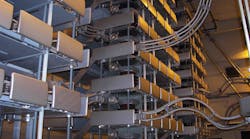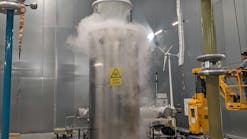The goal of our new Digital Innovations Center of Excellence is to bring the latest news about the digital technologies (e.g., HVDC systems, FACTS controllers, and Volt-VAR arrangements) related to our power delivery industry. When I wrote that statement in the first newsletter, it got me thinking about how to best support that idea. The news stories and announcements present a great deal of information concerning these types of technology. The authors assume the reader has a solid understanding of the theories and principles behind the technologies, which may not be the case for every reader.
You might think people working with the technology would know all the ins and outs of the systems, but what about those new to the industry or those facing new job assignments. Working in a utility demands flexibility on the part of the workforce as career paths change. I was a young substation engineer when an unforeseen personnel shakeup took place in the engineering department. When the dust settled, I found myself in the position of being the utility’s HVDC project engineer. You can imagine how I had to scramble to learn about the technology while trying to keep up with my new duties. With that in mind, it seems like a good idea to start a column in our newsletter devoted to some basic “down-to-earth” explanations of the concepts and thinking behind these digital technologies for those needing more understanding.
Let’s start with some basics - real basics and we’ll start with HVDC. In last month’s history column, we discussed what a valve is and where the term came from. This month we look at the thyristor, so we already have a couple of the terms defined. Continuing in that line of thought, the valve is housed in a valve hall at the converter station. The converter station gets that name because the conversion of electricity takes place there. By conversion, I mean the grid’s alternating current (AC) is converted to direct current (DC) by the rectifier. Then the DC is transmitted to the inverter where it is converted back to AC.
Before going further, we need to understand some basics of power electronics. We’ll start with how the valve works and progress through what takes place in the valve hall. I found some YouTube videos from Transpower New Zealand that provide some very good basic power electronics theory presentations. The first video is short, just a few minutes, but it explains how the valve operates. Next month we will add to the discussion and before you know it, we’ll understand some pretty complex technology and move into applications. I’m looking forward to your questions and comments.


